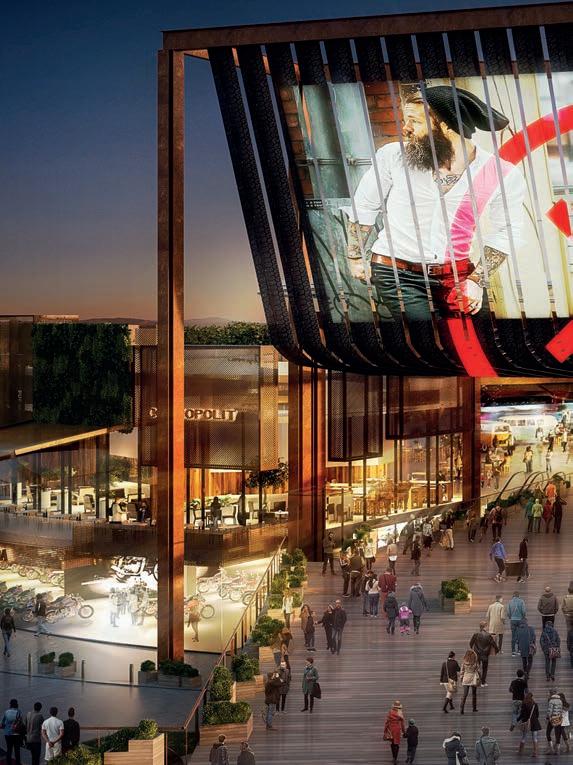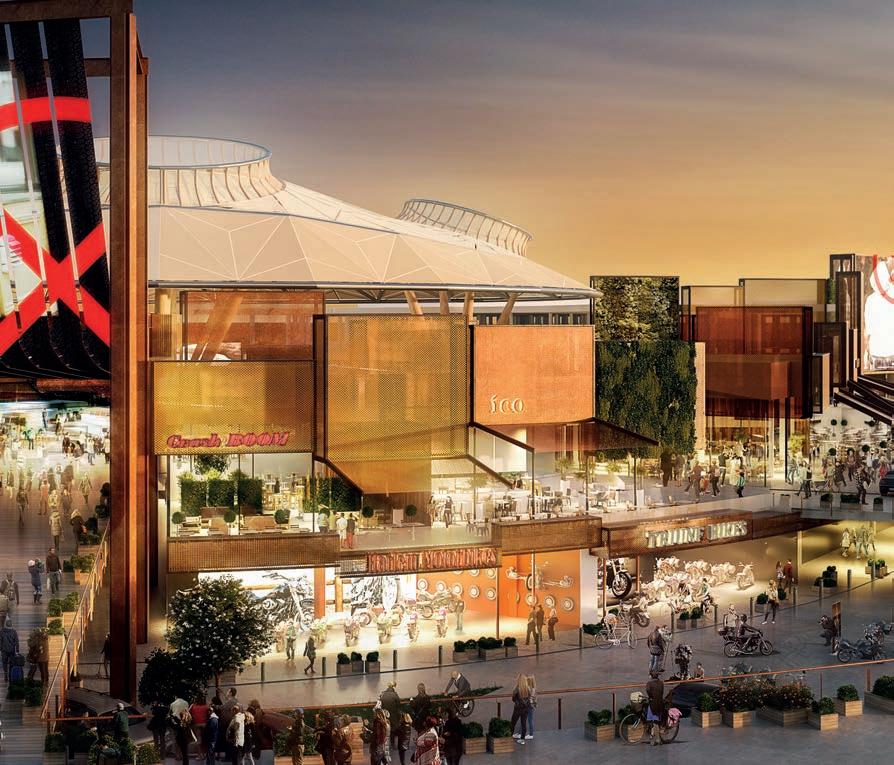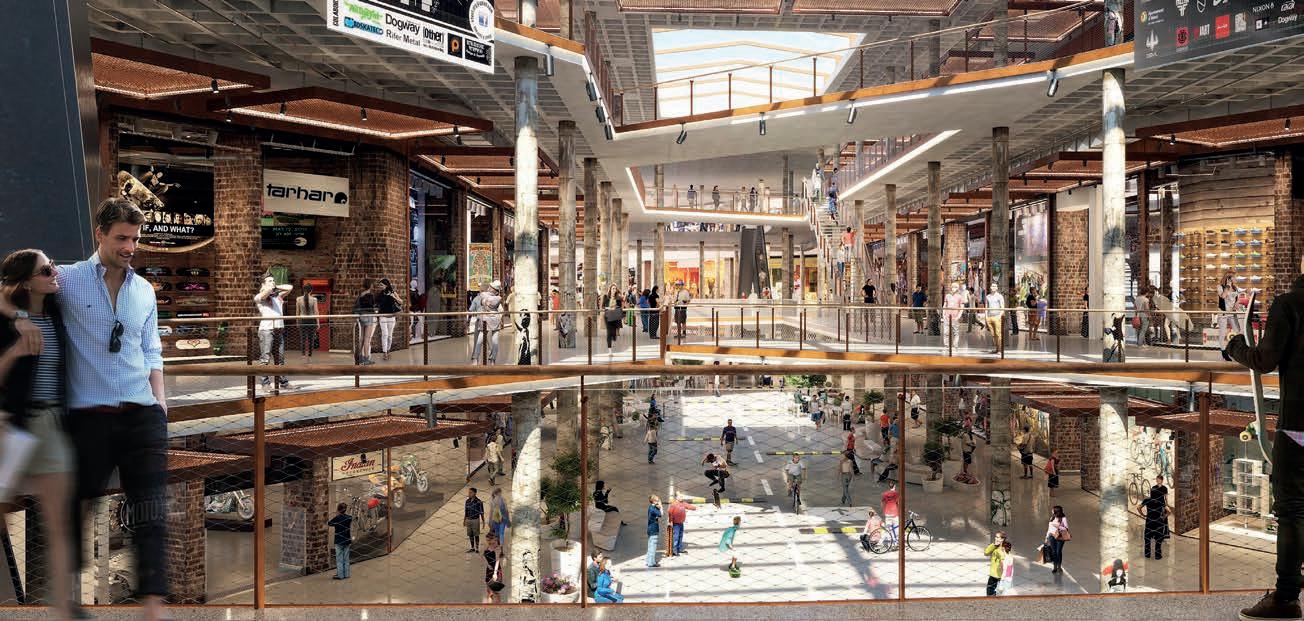
6 minute read
Interview Arcadio Gil : Shopping centers are having a challenging time
Arcadio GIl, CEO of Lasba

Advertisement

With the continuing rise of influential online retailers such as Zalando, Amazon and the likes, shopping centres are having a challenging time. But is e-commerce steering physical stores into a slow and steady demise? Or will retail developers find inspiring ways to reinvent themselves? Arcadio Gil, a Spanish real estate agency located in Madrid and oering retail consulting services across the Spanish region, specializing in shopping centers. Lasba is the Spanish member of the international network TIRCA, The International Retail Consulting Alliance, created by independent businesses that are experts in their respective markets and share the same values and business philosophies. The breadth and quality of their cross-border service is significantly enhanced through sharing knowledge, regular international trips, meetings and constant communication with each other. Together they provide the best advice to help their clients cross borders.
High online shopping rates are impacting revenues of traditional shopping centres. How can retail developers counter this trend? “The growth of the e-commerce retail has spread all over and the impact on the present and future revenues of the traditional bricks and mortar retail is without question.
What is also clear is that the impact will not be equally distributed, that shopping centers are by far the retail property elements that will suer least and the ones that are much more ready to find dierent ways to overcome the situation. Developers are already reacting to this, and, for instance, the percentage of square feet that is being dedicated to leisure and food and beverage is quickly expanding. This evolution is driven by the fact that consumers have a higher need for new experiences. They want to find something exciting outside of their own homes. At the same time, they want public spaces to play into their need for convenience. Hence, shopping centre developers are making more of an eort to create meeting points where consumers can relax or be entertained. The key is to give consumers what they cannot find online.”
What type of concept appeals most to today’s consumers? “A very noteworthy example is X-Madrid, a groundbreaking retail concept by Merlin Properties, one
of the three largest shopping centre owners in Spain and Portugal. This new 40.000 square metres shopping mall that will open its doors this autumn, has truly reinvented the shopping and leisure centre experience. What is interesting here is that they have put together a collection of entertainment venues, health clubs, sports centres and fashion stores and thus combine untraditional retail services with entertainment and educational services. For instance, there is a deep diving centre where people can also buy diving equipment, but they can also follow scuba diving lessons, join a fan club, and rent or repair their own equipment.

The 3 key drivers to launching a successful shopping mall according to Arcadio Gil Di erentiation It is not just about the big brands anymore. Di erentiation is key. Independent retailers are needed more than ever, as they contribute to a better retail mix. But di erentiation lies not only with the type of products or services o ered, but also in the settings. Shopping centres used to be closed up buildings, but now there is a growing need for open air schemes, water features, attractions and special venues. The unique design of Docks Bruxsel is a great example of this. Modern shopping centre constructions are making way to a shopping experience with a more authentic and vibrant atmosphere.
On another unit, they can even surf on the premises with their own board - because the shopping centre is equipped with its own artificial wave pool. X-Madrid also houses a climbing wall, an organic supermarket and a dynamic area dedicated to indoor and outdoor leisure. It is not a traditional or conventional combination, but this type of concept will certainly define new ways, new approaches toretail.”

A few of years ago, a growing number of retailers were using pop-up stores as a low-cost way to start a business and test new markets or products. Is there still a big role for pop-ups in the future? “Most definitely. I think that the popup market is still at the beginning of its economic journey. Some five years ago, Bikini Berlin, a pool of 20 wooden containers in the middle of a traditional shopping centre, was the first hugely successful pop-up experience . The idea of selling products in smaller, simpler locations with shorter leases inspired and continues to inspire a great number of people. And an increas
ing number of shopping centres are accepting pop-ups as part of their concept. The intimate and short-term vibe of a pop-up store caters perfectly to niche markets and the sales of specialty or seasonal products. It also fits well into people’s need for ‘conscious consumption’, a more sustainable and ethical form of consumerism: a small store that o ers
Location It is all about location - also in this digital era. The logistics property market is evolving very rapidly because of e-commerce: ordered goods have to be delivered in the closest proximity to the customer. In this logistic context, physical stores are becoming delivery points for online sales. Inditex, the largest fashion apparel retailer in the world, is already allowing a section of dedicated shopping floor space to be used for the delivery of clothes that were bought online. In the future, more and more back stages of physical stores will act as storage rooms for online sales. Shopping centres are particularly suitable endpoints for this as they are often located in the middle of cities. This could create a reverse synergy in customer behaviour, where e-commerce encourages customers to go to the physical shops to pick up the goods they ordered and incite these customers to buy other items.
Technology Technology has been the driving force behind the birth and growth of e-commerce. But in the same way technology can benefit shopping centres and steer them into a new era, a di erent approach to consumer relationships. Gathering customer data through smartphone use is just as much of an opportunity for shopping centres as it is for e-commerce platforms. Technology can also improve and accelerate the customer journey with respect to mobility. Finding car parking, for example, is often a big challenge for shoppers. By installing sensors or o ering car sharing opportunities, allowing car sharing spaces, or the use of the new mobility devices into the centre. There are plenty of issues where technology is helping our business. And there is much more to come in the immediate future.
fewer items seems more ecological than a hypermarket. Consumers are more conscious than ever. They don’t like to throw away things, they want to reuse as many of them as possible.”
How do large retail developers respond to this changing consumer behaviour and the demand for a more sustainable retail market? ”The H&M Group is clearly making an e ort by inviting customers to bring back items that they are not wearing anymore, so they can be recycled and given a second life. The Swedish network of shops of their chain store

& Other Stories even dedicates a percentage of its floor space to secondhand clothing. But H&M is not the only retail player that is considering the environment. A growing number of retailers is actively thinking about ways to prolong the life cycle of their products and to contribute to a sustainable environment. Sustainability is also a key factor for shopping centre developers.”
With regard to construction, you mean? ”Well yes, there is also a huge change in the building construction and maintenance field. Today developers cannot a ord to construct a new building if it does not have a serious approach to sustainability. The time when we could just waste water or energy resources, or throw away everything without any consequences is over. We cannot
approach retail buildings in any other way than by targeting almost zero energy consumption. Developers are aiming for the highest possible goals in terms of water consumption, solar energy, reusable materials, local components and waste management. It is amazing to see some new projects arising today on this path.”
So it seems shopping centres have a bright future ahead? ”Definitely! Trinity Leeds, Markthal Rotterdam, Mall of Scandinavia, Liverpool One, Puerto Venecia. In almost every European country, there are so many exciting new shopping and leisure centres to explore. E-commerce has encouraged retail developers to turn it up a notch, but it cannot replace the real-life experience.”




